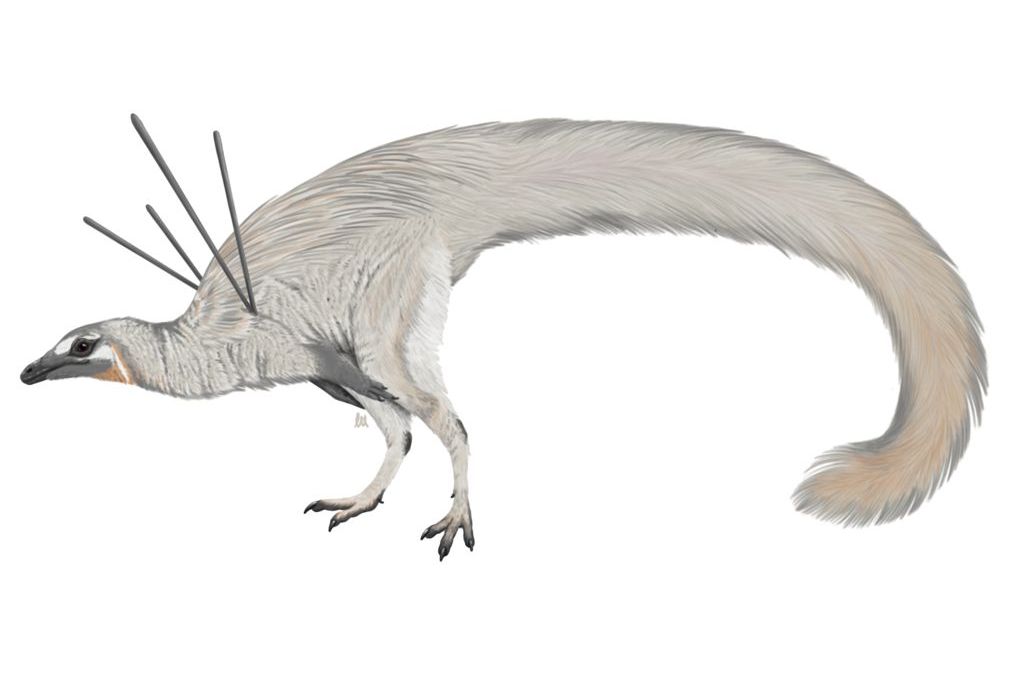
In 1995 the fossil of a chicken-sized dinosaur was found in a gypsum (chalk-like) formation in northeastern Brazil. Twenty-five years later the dinosaur got a name — Ubirajara jubatus or “Lord of the Spear” — after x-rays revealed four long filaments on its shoulders and a feathery mane (jubatus) on its back. Ubirajara is the first feathered dinosaur found in the Southern Hemisphere.
What were the feather spears used for? Did this dinosaur raise his mane?
A modern bird, the King of Saxony bird-of-paradise (Pteridophora alberti), gives us a good idea what this fancy “equipment” was used for.
See a colorful illustration of Ubirajara jubatus at Science Alert: Newfound Dinosaur Had Outrageous Feather-like Decoration.
p.s. The announcement of Ubirajara brought the fossil to the attention of the Brazilian government. The fossil was exported to Germany in 1995 but it has been illegal to export fossils from Brazil since 1990. Brazilian fossils can be loaned but not owned overseas. Read about the controversy here.
(illustration from Wikimedia Commons; click on the caption to see the original)
Birds exhibit amazing diversity. Thanks for showing us how how these filaments might have worked based on the modern bird-of-paradise. You brought the past to life.